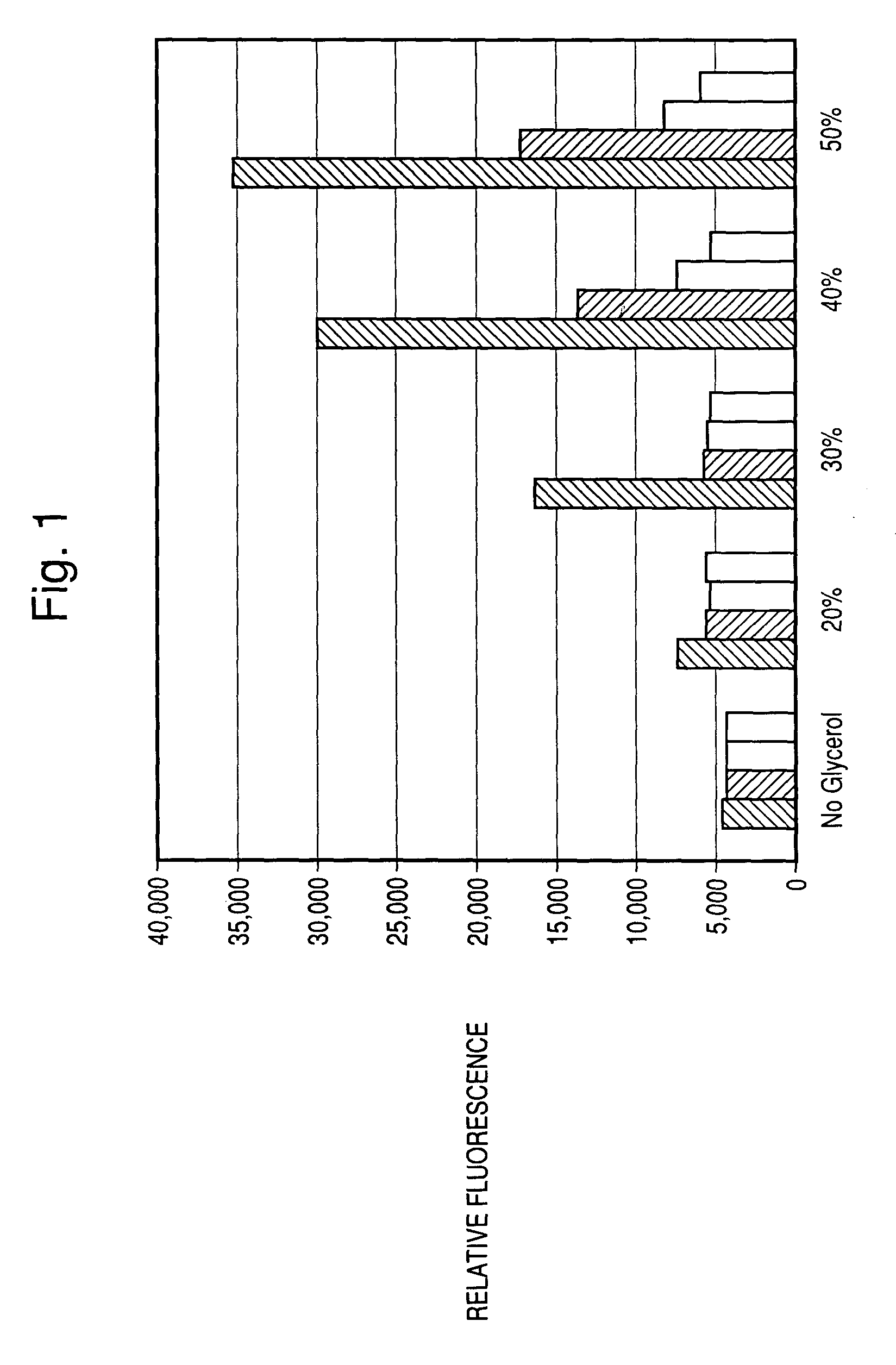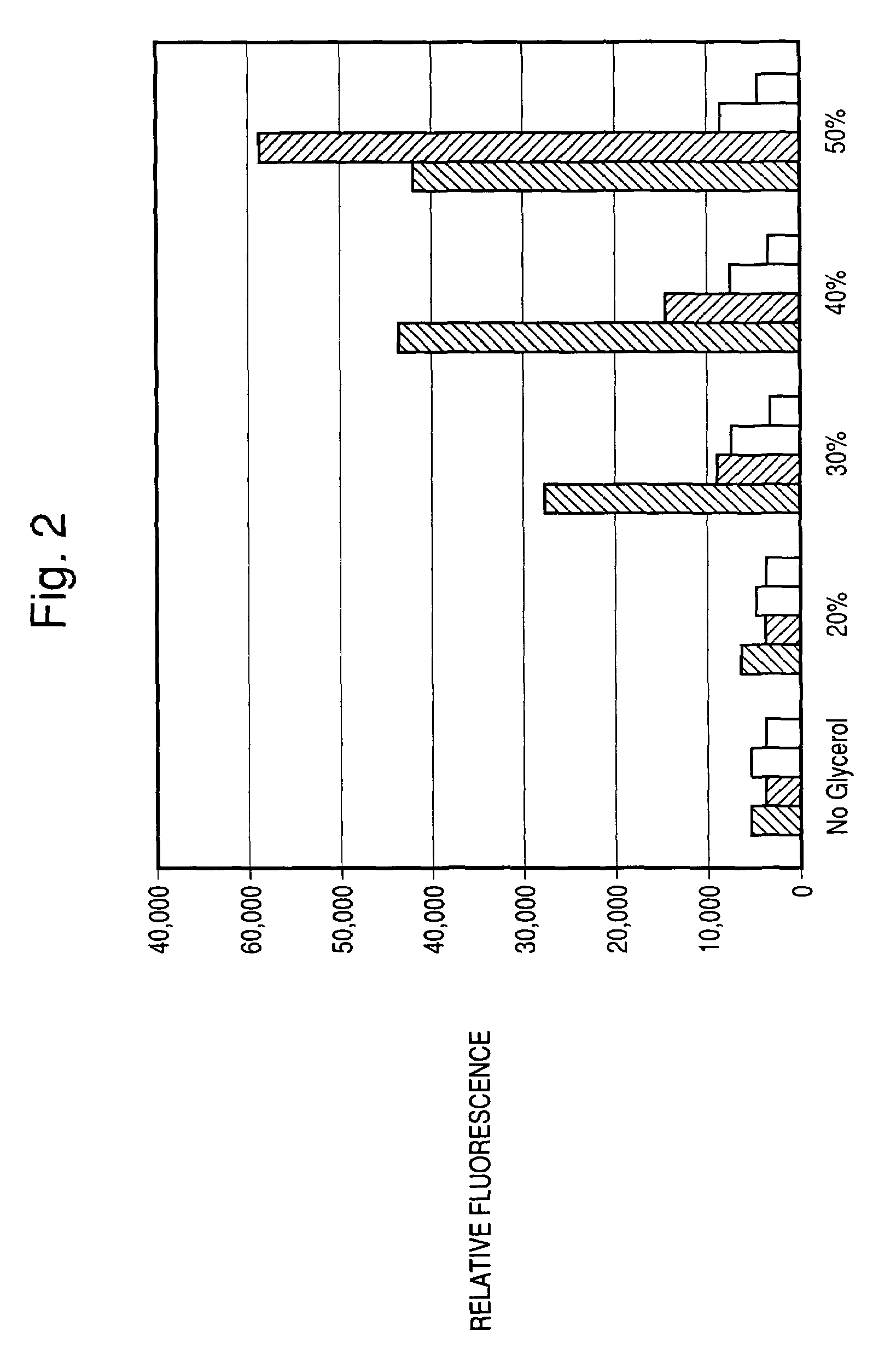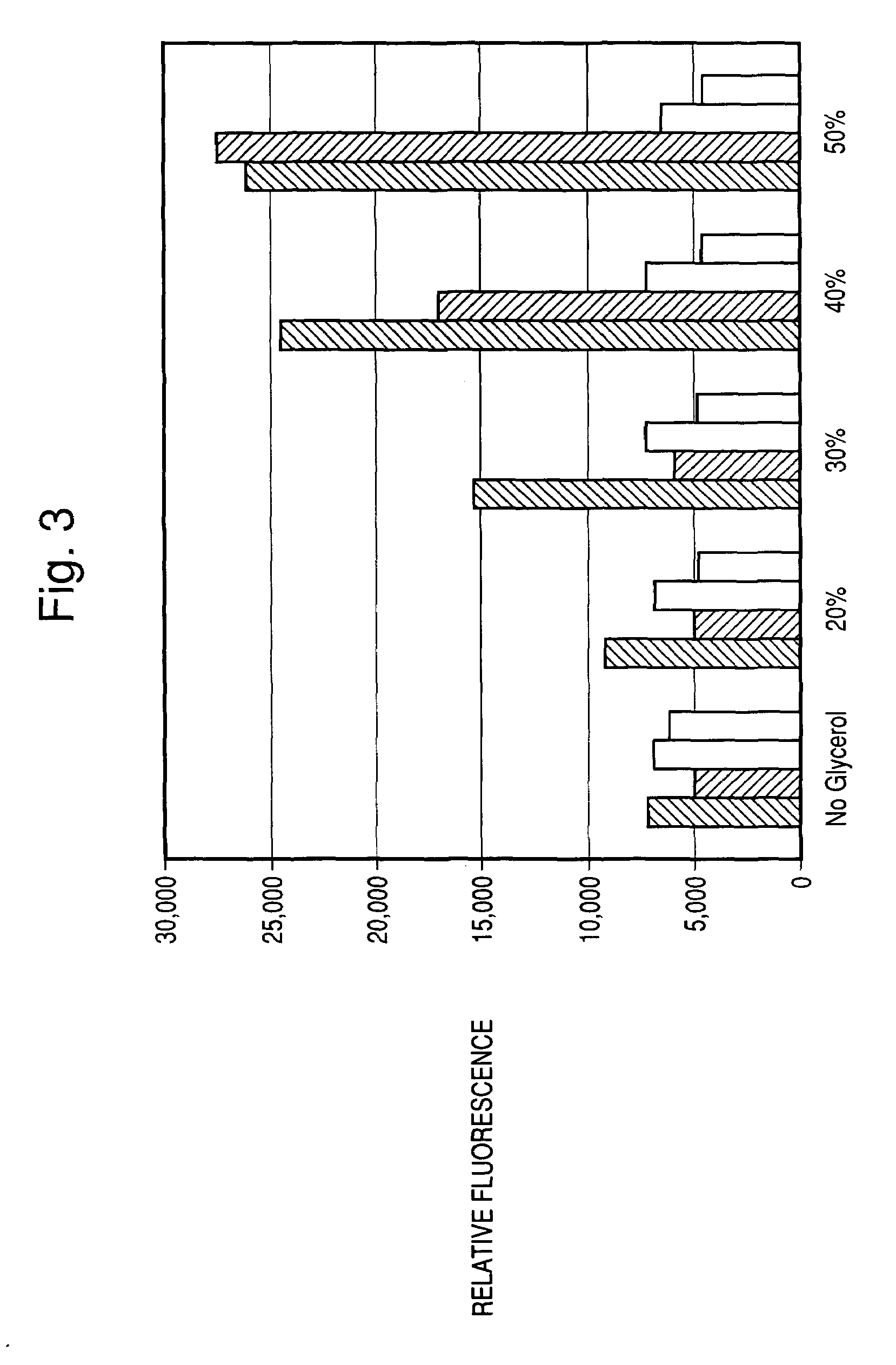Methods and reagents for improved cell-based assays
a cell-based assay and reagent technology, applied in the field of cytoenzymology, can solve the problems of not being designed for the monitoring of enzymes, not being able to study the activity of intracellular enzymes in vital cells, and being unsuitable for enzyme activity studies, etc., to improve the detection sensitivity, and improve the effect of caspase 6 activity
- Summary
- Abstract
- Description
- Claims
- Application Information
AI Technical Summary
Benefits of technology
Problems solved by technology
Method used
Image
Examples
example 1
Improved Assay using Glycerol or 67 DMSO
[0146]The improved detection of the assays of the present invention resulting from the use of glycerol at concentrations greater than 5% was demonstrated by conducting assays for apoptosis. To initiate such assays, 25 μl of Caspase CellProbe Reagent™ (Beckman Coulter) was added to a suspension of 1×105 U-937 cells in 110 μl of culture medium in a 96-well microtiter plate. Cells were incubated for one hour, and had been either uninduced or induced by prior incubation in the presence of 2.5 μM Camptothecin. The final concentration of the Caspase CellProbe Reagent™ was 30 μM.
[0147]As can be seen in FIGS. 1–3, a dramatic improvement in detection of Caspase 1, 3 and 6 activity is realized at various optimal glycerol concentrations. In the Figures, the 5 series of columns reflect results obtained with no glycerol, 20% glycerol, 30% glycerol, 40% glycerol and 50% glycerol. The individual columns (left to right) within each data series reflect results...
example 2
Improved Assay Using Glutamate
[0151]The improved detection of the assays of the present invention resulting from the use of glutamate at concentrations ranging from 1.5 M to 2.0 M is demonstrated by conducting assays for apoptosis using HeLa cells. To initiate 110 such assays, Caspase CellProbe Reagent™ (Beckman Coulter) is added to a suspension of 1.5×104 HeLa cells / well in a 96-well microtiter plate. The final concentration of the Caspase CellProbe Reagent™ was 30 μM. Reaction is for 1 hour.
[0152]As can be seen in FIG. 5, a dramatic improvement in detection of Caspase 6 activity is realized when various concentrations (1.5 M, 1.7 M, 1.8 M, and 2.0 M) of glutamate were employed. In FIG. 5, and in the examples below, the Fluorescence Ratio is defined as:
Fluorescence Ratio=Induced Fluorescence / Uninduced Fluorescence
where the Induced Fluorescence is the difference between the 1 Hour Value and the Start of Assay Value, and the Uninduced Fluorescence is the difference between the 1 Hour...
example 3
Improved Assay Using Cbz CellProbe™ Reagents
[0153]The enhanced detection sensitivity of the assays of the present invention resulting from the use of Cbz-blocked cellprobe reagents (Molecular Probes) is demonstrated by the large increases in signal to noise ratio observed (FIG. 6A). At the lower 10 μM substrate concentrations, 7500 seeded cells and with apparent similar responses to potassium glutamate additions previously observed, it outperforms the unblocked substrate. The data thus show that inclusion of Cbz cellprobe reagents (particularly if unmixed) improved assay sensitivity.
[0154]FIG. 6B shows the unprecedented increase in signal level increase of induced caspase 3 detection sensitivity. For the experiment, 7500 HeLa cells / well were plated overnight; Cbz-blocked cellprobe reagents (Molecular Probes) final concentration is 30 μM.
[0155]FIG. 6C shows the signal to background ratio (“S / N ratio”) of the Cbz-blocked cellprobe reagents (Molecular Probes). The S / N ratio is found to...
PUM
| Property | Measurement | Unit |
|---|---|---|
| wavelength | aaaaa | aaaaa |
| wavelength | aaaaa | aaaaa |
| pH | aaaaa | aaaaa |
Abstract
Description
Claims
Application Information
 Login to View More
Login to View More - R&D
- Intellectual Property
- Life Sciences
- Materials
- Tech Scout
- Unparalleled Data Quality
- Higher Quality Content
- 60% Fewer Hallucinations
Browse by: Latest US Patents, China's latest patents, Technical Efficacy Thesaurus, Application Domain, Technology Topic, Popular Technical Reports.
© 2025 PatSnap. All rights reserved.Legal|Privacy policy|Modern Slavery Act Transparency Statement|Sitemap|About US| Contact US: help@patsnap.com



